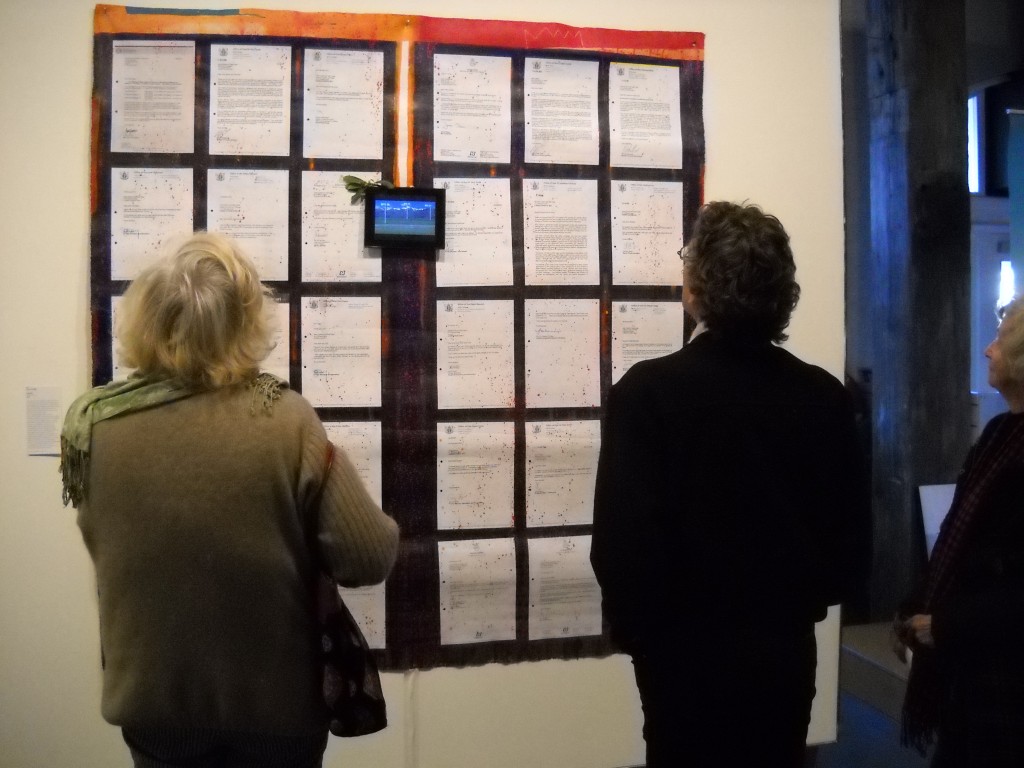Sam Mahon and Jane Zusters two of the Artists for save our water artists are in the Artists as Activists show at the Academy of Fine Arts showing in Wellington till September 12.

Sam Mahon has made a sculpture of Environment Minister Nick Smith’s head from cow dung and filled with the skeletons of birds to protest about the impact dairy farming and intensive development is having on the environment.The head opens up when a 50-cent or $2 coin is dropped in its base, and a dawn chorus is played, but the birds in the sculpture are skeletons.
“Money comes before the environment the sacking of the elected Environment Canterbury regional councillors and the weakening of water conservation orders in Canterbury would mean the region’s most pristine rivers would lose some of their protections.As a result, birds such as the endangered black-fronted tern, which lived on those rivers, would lose their habitat’.says Canterbury sculptor Sam Mahon.He wanted to highlight the impact farming was having on his local environment, where nitrate levels in the water were higher than was considered safe for consumption and agricultural industries placed a heavy demand on water supplies.
Last year, the simpler version of his sculpture sold on Trade Me for more than $3000.

Artist Jane Zusters spoke at the launch of Forest and Birds Save the Mackenzie CountryCampaign which was hosted by the Academy of Fine Arts.
“Today I want to talk a little bit about my work Crown. These are real letters sent by members of Parliament in response to our group Artists for save our water. We ‘ve been using art to make the public aware of the proposed intensification of farming in the Mackenzie country. The video for love of the Mackenzie Country was used to start the Mackenzie Guardians presentation at the water hearings at Environment Canterbury and then sent to various members of parliament. Three years ago most New Zealanders weren’t aware of applications to take millions of cubic meters of water from high country rivers to irrigate more than 27,000 hectares of the Mackenzie Country.
Taking this water for irrigation will severely affect the wetlands THE vegetation, THE SOIL, THE flora, fauna, fish and birdlife, AND DESTROY THIS UNIQUE LANDSCAPE. There are internationally significant bird habitats adjacent to these proposed irrigation sites. Eight species of threatened birds are here including the kaki or black stilt. Along with the destruction of wetlands, natural habitats and flow of numerous high country rivers and streams. we know from our experience of this type of intensive farming there will be many potential adverse effects from the farm nutrient runoff.
The value of high country tourism is estimated at $4 billion a year so why would we kill the goose that lays this golden egg.
To grant these water rights in this dry land is not in our long-term social, economic and cultural interests. The Mackenzie Country is more valuable to us long-term as a storehouse of our unique endangered plants and wildlife and possible world heritage site. I believe we need to balance the proposed economic development against the damage to the existing envirionment and the loss of happiness of birds and fish and us all.
We must preserve the Mackenzie Country for future generations otherwise our children will inherit the weeds and dried up rivers whose birds have gone.We need to have a vision for the basin. There should be a moratorium on development until that is sorted.

Close up of the video for Love of the Mackenzie Country playing as part of Zusters’ work Crown
The exhibition, Artists as Activists, opened 20 August at the Academy of Fine Arts Gallery, Queens Wharf, Wellington and runs until September 12.
It also features works from artists including Michael Smither, Grahame Sydney and poet Brian Turner.


